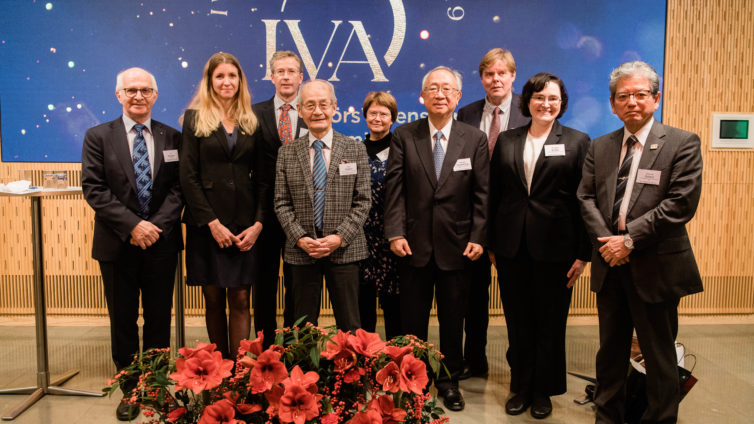
Lithium-ion batteries benefitting humankind
Akira Yoshino who has been working at chemicals company Asahi Kasei since 1972 is an unusual Nobel Laureate in that his ground-breaking discoveries were made in an industrial lab and not in academia. Akira Yoshino’s research was the final piece in the puzzle of how to make a lithium-ion battery safe and practical.
A battery without the risk of explosion or fire; a battery that was small, lightweight and could be recharged over and over again. But he found it hard to come up with a suitable material for the cathode. His research team tested almost a million (!) different constellations of carbon before they found the right one. They still faced the problem of density – it was too low to make a small and handy battery. A practical, usable battery needs to fit into portable and lightweight consumer products such as mobile phones, speakers, laptops etc. The principles behind today’s lithium-ion batteries were in place in the mid 1980s. Commercialisation started at the beginning of the 1990s and demand has grown steadily since then.
Dr Akira Yoshino talked about the battery dilemma, or “trilemma”, as he called it – the need to find harmony in the development of batteries that combine convenient use with economy and environmental considerations. This is even more important as more and more vehicles are battery-powered, and reliable batteries need to be environmental acceptable in the long term. Dr Elizabeth E. Endler, Research Programme Director at Shell, said that while a mobile phone uses 0.006 kW, a car requires 60 kW. In other words, ten thousand times more energy!
Long history of research exchange
It was at an IVA Seminar under the heading “Future Battery – Technology and Ecosystem”, organised in cooperation with the Embassy of Japan, the Sweden-Japan Foundation, JSPS (Japan’s Society for the Promotion of Science) and the Swedish Foundation for Strategic Research (SSF) that Akira Yoshino talked about his research achievements. There is a long tradition of cooperation between Japan and Sweden and IVA’s President Tuula Teeri started by giving a few examples. Seminar participants included several prominent speakers with this year’s Nobel Laureate in Chemistry as the keynote.
Göran Lindbergh of the Royal Institute of Technology (KTH) talked about Swedish battery research. BASE is the name of a collaborative initiative involving several universities and companies. The EU has a major initiative in the form of BATTERY 2030+ in which Sweden is playing a leading role. One aspect being explored is the possibility of using lignin-based carbon fibre as the anode material. This is an example of a renewable material in batteries. Another important aspect in limiting energy consumption is the weight of the battery in different modes of transport. Basic research into batteries is also needed. If a battery is charged rapidly it loses capacity and we do not really know why. We do know that when a battery gets old, resistance is increased, but batteries do not age at the same rate. To understand the whole process it is necessary to look inwards and have models for the physics and the electrochemical and chemical reactions.
The majority of all batteries are manufactured in Asia but this is changing; interest in producing batteries has increased in Europe, with Northvolt’s large plant in northern Sweden as a prime example. Dr Emma Nehrenheim, Chief Environmental Officer at Northvolt, talked about the company’s aim to become the leading battery manufacturer in Europe. Northvolt is building a factory outside Skellefteå where it will make batteries for cars and other applications. According to the Company, the process will be entirely powered by clean energy. They are counting on full-scale production by 2021 followed by several factories in Europe.
Lars Hultman, CEO of SSF, concluded by talking about the important fact that we need to be better at reducing lithium in our batteries because it is not a renewable resource. It was actually created during the Big Bang and no more has been created since.
The article has also been published on IVA:s website.